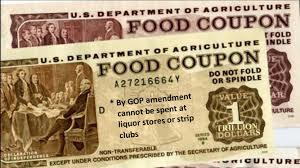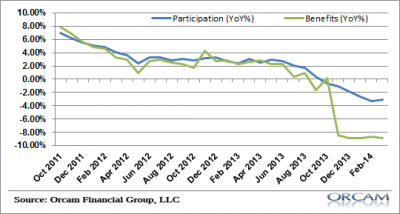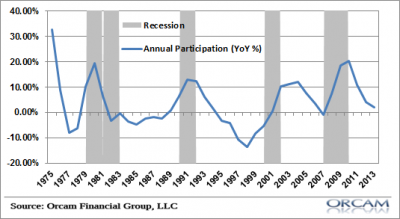One of the more common refrains from the permabear crowd over the last 5 years has been the unstoppable rise in food stamps in the USA. It’s true. There has been an unbelievable increase during the great recession from 28 million Americans to over 46 million Americans on Food Stamps. That’s pretty bearish, right?
Then again, this shouldn’t come as a big surprise since the recession was particularly deep and the long-term unemployment situation has been practically unheard of. But the trend has started to shift in a big way. The rate of participation in the food stamps program has now declined on a year over year basis for six straight months. And the cost of benefits has declined at a near double digit pace for each of the last 5 months. After reaching peak participation of 47.6 million last August the number of participants has declined to 46.1 million.
This might seem like good news, but it’s more likely a sign of a late cycle recovery trend. You see, food stamps are a countercyclical event. They’re part of what economists refer to as “automatic stabilizers”. That is, when corporations fire employees they often sign up for government benefits so they can try to make ends meet while they look for work. And those benefits are most in demand when the economy is at its worst. So programs like food stamps “automatically” kick into high gear when the economy goes into recession. You can see this clearly in the following chart:
The fact that this trend is now sharply improving means that the economy is on the mend. But it also means that the economy is late in the cycle of expansion. And so what looks like a positive trend could actually be a sign of something negative developing. So the time to be most fearful of trends in food stamps is not when they’re soaring thru the roof, but when this trend turns negative. And we’re getting very close to that point in the cycle.
Mr. Roche is the Founder and Chief Investment Officer of Discipline Funds.Discipline Funds is a low fee financial advisory firm with a focus on helping people be more disciplined with their finances.
He is also the author of Pragmatic Capitalism: What Every Investor Needs to Understand About Money and Finance, Understanding the Modern Monetary System and Understanding Modern Portfolio Construction.




Comments are closed.